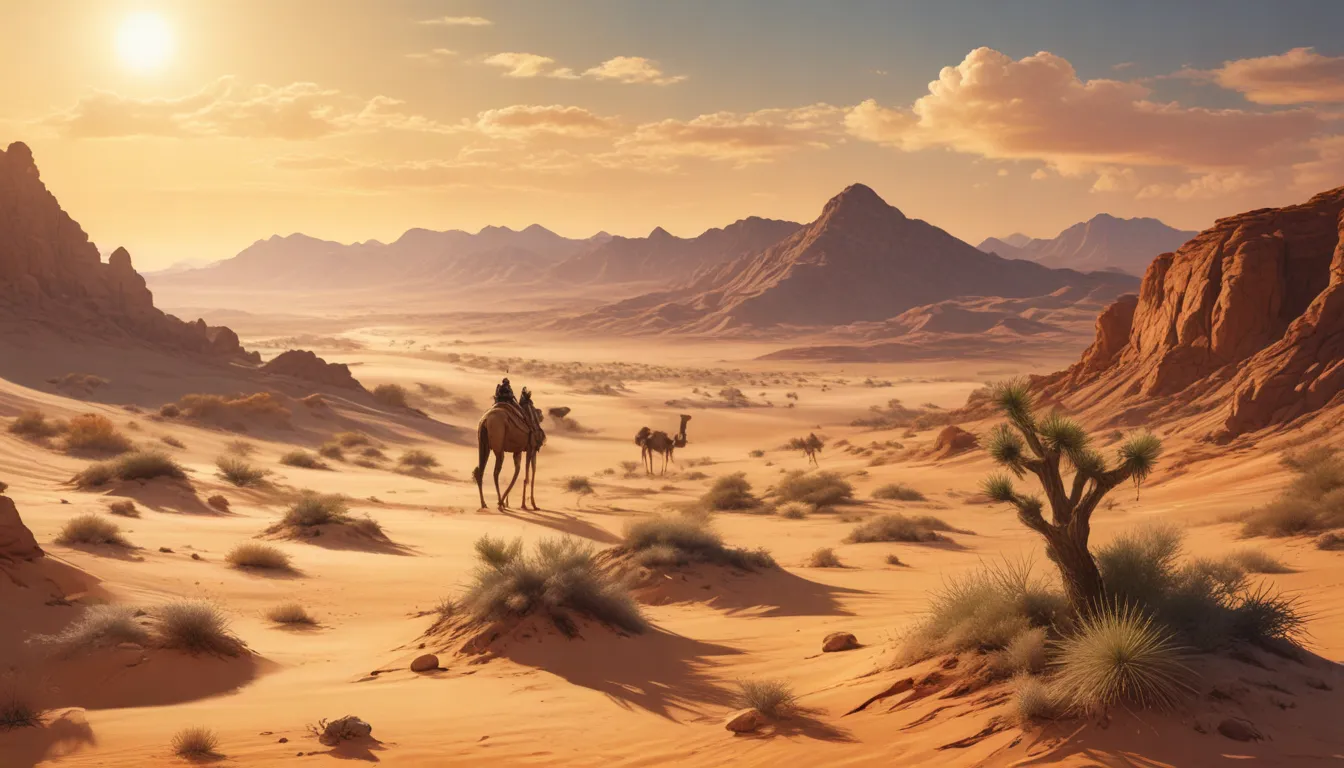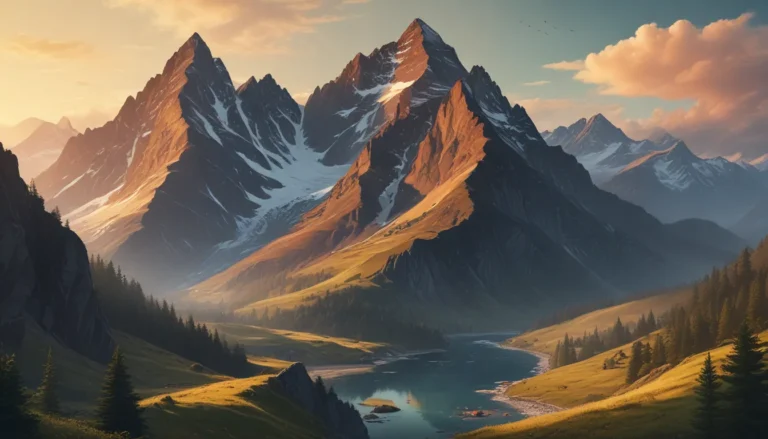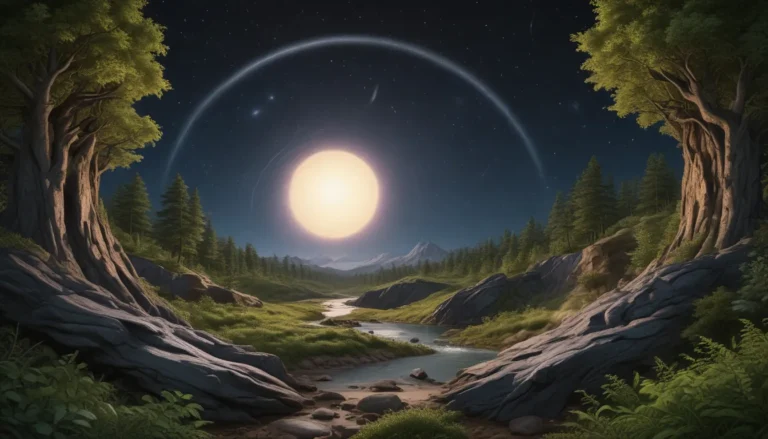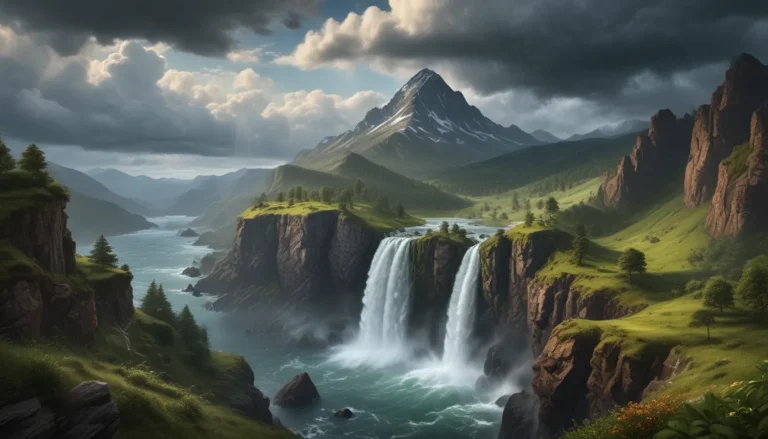A Note About Images: The images used in our articles are for illustration purposes only and may not exactly match the content. They are meant to engage readers, but the text should be relied upon for accurate information.
Hot deserts are remarkable landscapes that cover a substantial portion of the Earth’s surface, showcasing extreme conditions and unique features. From the expansive Sahara in Africa to the arid landscapes of the Arabian Peninsula, hot deserts offer a glimpse into a world of fascinating adaptations and survival strategies. In this article, we will unravel 14 astonishing facts about hot deserts that will broaden your understanding and appreciation of these harsh yet captivating environments. Embark on a journey through some of the most remarkable aspects of hot deserts that will leave you in awe of the resilience of life in these extreme conditions.
Unveiling the Magnificence of Hot Deserts
Hot deserts are characterized by soaring temperatures, scarce vegetation, and unique geographical formations that make them truly unique ecosystems on our planet. Let’s delve into some captivating facts that shed light on the incredible diversity and adaptations that exist in these arid regions.
The Vastness of Sahara: Earth’s Largest Hot Desert
Stretching over 3.6 million square miles, the Sahara Desert reigns as the largest hot desert globally, covering most of Northern Africa and nearly the size of the United States. Its vast sandy expanse offers a myriad of wonders waiting to be explored and admired.
Atacama Desert: The Driest Place on Earth
Located in Chile, the Atacama Desert holds the title of the driest place on Earth. Some areas within this desert have not seen a drop of rainfall for several decades, creating an extreme environment that is both challenging and mesmerizing.
Wildlife Wonders: Snow Leopards in the Gobi Desert
The Gobi Desert, spanning northern China and southern Mongolia, serves as the elusive habitat of the rare and endangered snow leopard. These majestic big cats have adapted to the harsh desert conditions, showcasing the resilience of wildlife in challenging environments.
Majestic Sand Dunes of Namib Desert
Namibia’s Namib Desert boasts some of the tallest sand dunes in the world, with iconic structures like Dune 45 standing approximately 170 meters high. These mesmerizing dunes attract visitors from across the globe, offering a sight to behold.
Great Victoria Desert: Larger Than the United Kingdom
Spanning Western Australia and South Australia, the Great Victoria Desert covers over 348,750 square miles, surpassing the entire United Kingdom in size. Its vast expanse showcases the grandeur and diversity of hot desert landscapes.
Diverse Wildlife of Kalahari Desert
Despite its classification as a desert, the Kalahari Desert in Southern Africa teems with a diverse range of wildlife, including meerkats, lions, giraffes, and many other fascinating species. The desert’s biodiversity is a testament to the adaptability of life in challenging environments.
Mysterious Thar Desert: A Hub of Population
As one of the most populated deserts globally, the Thar Desert in northwestern India and eastern Pakistan is home to millions of people. Referred to as the “Great Indian Desert,” it showcases the coexistence of human settlements with the harsh desert environment.
Conservation Marvel: Joshua Trees in Mojave Desert
The Mojave Desert in the southwestern United States is renowned for its unique Joshua Trees, which can live for centuries and are known for their distinct appearance. These resilient plants symbolize the beauty and adaptability of desert flora.
Delving Into the Enigmatic Features of Namib Desert
The Namib Desert harbors some of the oldest sand dunes globally, with structures dating back around 80 million years. These ancient geological formations offer a glimpse into the enduring beauty and evolution of deserts over millennia.
Dive Into Adventure: Simpson Desert’s Sand Dune Marvels
Located in central Australia, the Simpson Desert is known for its vast red sand dunes, making it the largest sand dune desert worldwide. Adventure seekers are drawn to its remote and captivating landscapes, offering a unique experience in the heart of the desert.
Heat Records: The Scorching Surface of Dasht-e Lut Desert
In Iran, the Dasht-e Lut Desert holds the record for one of the hottest surface temperatures on Earth. With a staggering temperature of 159.3 degrees Fahrenheit (70.7 degrees Celsius) recorded in 2005, it stands as one of the hottest places on the planet.
Conclusion: Embracing the Wonders of Hot Deserts
Hot deserts stand as fascinating ecosystems that showcase nature’s resilience and adaptation to extreme conditions. From the vast Sahara to the majestic Namib, each desert offers a unique tapestry of life and landscapes that captivate and inspire exploration. As we unravel the mysteries and marvels of hot deserts, we gain a deeper appreciation for the beauty and diversity of these remarkable environments.
FAQs: Exploring the Intriguing Aspects of Hot Deserts
Q: What causes hot desert environments to have such extreme temperatures?
A: Hot deserts experience extreme temperatures due to their proximity to the equator and the lack of cloud cover, allowing sunlight to directly heat the surface.
Q: Can anything survive in hot desert conditions?
A: Yes, many plants and animals have evolved specific adaptations to survive in hot desert conditions, including water storage mechanisms and temperature regulation strategies.
Q: Are there unique geological formations found in hot deserts?
A: Absolutely! Hot deserts boast stunning sand dunes, canyons, mesas, and salt flats, shaped by wind erosion and sediment accumulation over millennia.
Q: Why are hot deserts considered fragile ecosystems?
A: Hot deserts have limited biodiversity and are highly susceptible to human impact, making them fragile ecosystems that can be easily disrupted by activities such as overgrazing and urbanization.
Q: Can hot deserts receive precipitation?
A: While hot deserts are typically dry, they can experience infrequent rainfall during specific seasons or localized weather patterns, sometimes leading to flash floods due to the arid soil’s limited water absorption.
Hot deserts unveil a world of wonder and adaptation, showcasing the resilience and diversity of life in extreme environments. As we delve deeper into the mysteries of these harsh landscapes, we gain a newfound appreciation for the ingenuity and beauty of hot deserts. Let the allure of hot deserts inspire you to explore and protect these extraordinary ecosystems, preserving their magic for generations to come.






